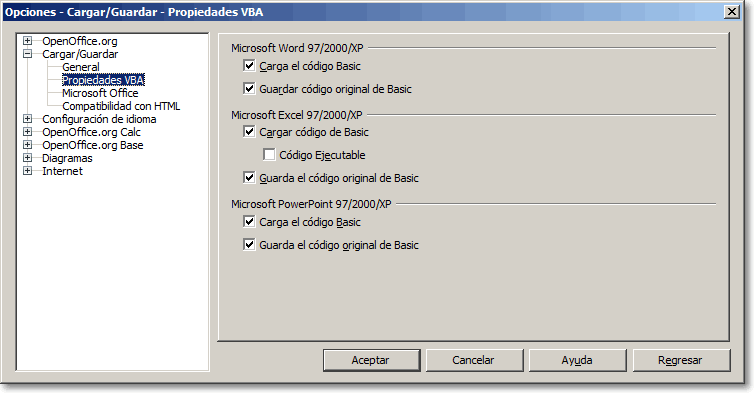
#Openoffice basic macros code#
This is where you can write code for a macro in the LibreOffice Basic language. This launches a My Macros & Dialogs window. Then I click the New button, from the column of buttons at the right of the dialog. For example, if I want to store the macro in TestLibrary under My Macros, I click it. As mentioned before, My Macros is for universal macros and the document folders are for macros for that specific document.Ĭlick on the folder or sub-folder where you want to store the macro. You can create new macros in My macros or one of the ftolders for the open documents. You can click the Run button in the dialog to run the part you clicked on. When you click one of the macros, the different parts of the macro will be listed in the box to the right of it. The folder will have sub-folders which contains the macros. It lists the three folders mentioned in the previous section. This dialog has more LibreOffice Basic, derived from OpenOffice Basic, has been the suite’s language for macros since it was forked from .įeatures than the dialogs for the other three languages. The choices are as follows:Ĭlicking this opens the LibreOffice Basic Macros dialog. To create anew macro, you need to highlight the Organize Macros sub-menu that is in the Macros sub-menu. This folder contains scripts in the four languages that are for that specific document. These scripts are in one of the four languages. LibreOffice Macros contains all the macros that came with the installation.It will contain LibreOffice Basic, Python, JavaScript, and BeanShell scripts.Or they may only be available to one document type, such as a spreadsheet.The script would run in an text document, spreadsheet, presentation, etc. They may be able to run in any type of document.They can be used in current documents or new documents that you create. Universal macros are available to more than one document.My Macros contains all the universal macros that have been created by you.These can be found when you:Ĭlicking either Run Macros or Edit Macros will launch dialogs with these three folders. All the dialogs for macros show this structure.įolders in it: My Macros, LibreOffice Macros, and one for each of the open documents. It shows the three main sections (or folders) where macros are stored: My Macros, LibreOffice Macros, and one for the current document. It has three main The Macros Selector is accessed by clicking Run Macros in the Macros sub-menu. It has more options for this language in its dialogs.įirst let’s understand how LibreOffice organizes macros, both new ones that you create and those that come with the installation.Īll the macros are centrally organized through the macro library. While LibreOffice can create and run macros created in JavaScript, Python, and BeanShell, its primary macro language is LibreOffice Basic.
#Openoffice basic macros mac#
This article will focus on creating new macros in LibreOffice and the Windows and Mac versions of Microsoft Office.

The open-source suite uses JavaScript, Python, and BeanShell to create macros in addition to LibreOffice Basic. Most programmers are not familiar with this language, so LibreOffice uses other languages that are familiar to many programmers. LibreOffice, by default, uses LibreOffice Basic, an open-source scripting language that was taken from. It has been part of it for two decades, being based on Visual Basic 6.0. The famous office suite uses Visual Basic for Applications (VBA). Most Microsoft power users are familiar with macros in Office. In this article we will compare how each one handles macros in general. In the last blog, I compared recording macros in LibreOffice to doing the same in Microsoft Office. They are hard coded through the application’s coding interface. The best macros are not recorded through the user interface of an application.


 0 kommentar(er)
0 kommentar(er)
